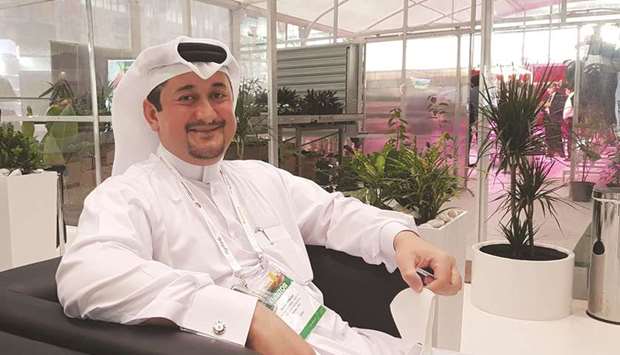Agrico, a private Qatari agricultural development company established in 2011, aims to produce around 800 tonnes of fresh shrimps and fish (tilapia) annually, boosting the country’s food security efforts.
“Hopefully by the end of this year, we will start the harvest over 10,000sqm. The production will be around 350 tonnes per year of vannamei shrimp, a freshwater shrimp,” prominent agriculturist and Agrico managing director Nasser Ahmed al-Khalaf told Gulf Times.
He was speaking on the sidelines of the eighth edition of Qatar's International Agricultural Exhibition (AgriteQ) and International Environmental Exhibition (EnviroteQ), which will conclude on Saturday at the Doha Exhibition and Convention Centre.
Al-Khalaf said Agrico’s shrimp production will cater to at least one-third of the total local consumption of fresh shrimps, estimated at 1,000 tonnes annually. However, he noted that Qatar’s population consumes more frozen shrimps than fresh.
The company, which is also venturing into aquaponics, is also planning to set up a 10,000sqm facility for fish production, aimed at producing 450 tonnes of tilapia.
“We are starting levee production, the aquaponics is a biosystem, it is not something new in the world but is unique, and we are not using any mechanical system,” al-Khalaf said.
Compared to natural fertilisers, he said aquaponics produce better results - faster growth rate and high-quality vegetables such as cucumbers, tomatoes and eggplants, among others.
“(With aquaponics) we have less problem and the cost is only 3% compared to the normal fertiliser. We are not using fertiliser, instead, we are putting fish feeds. Every six months, we can harvest and sell the fish as well,” he said.
“We are covering a big part of the raw materials; so, if we make a comparison between the feed and the fertiliser, it is only 3% of the fertiliser cost, which is extremely low. Therefore, we will have very good production through the year.
He explained that in aquaponics, solid wastes are filtered from liquid wastes and go to a separate tank where they are used for trees and landscaping while the latter go to a second tank – a bio-filter. They have pieces of plastics, which serve as a natural habitat for bacteria and feed on the ammonia that come from the fish.


